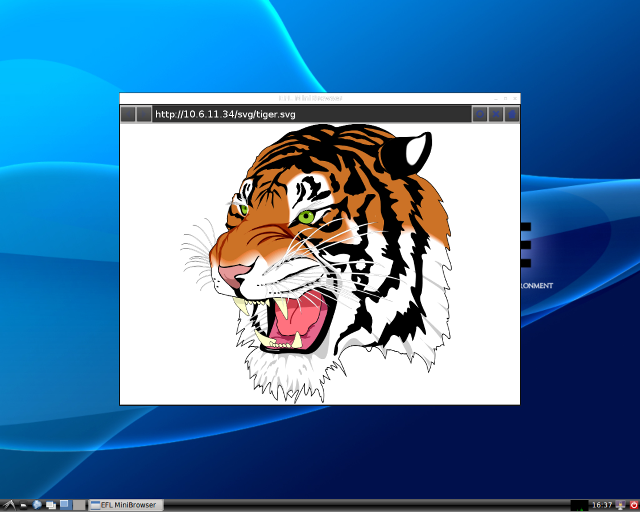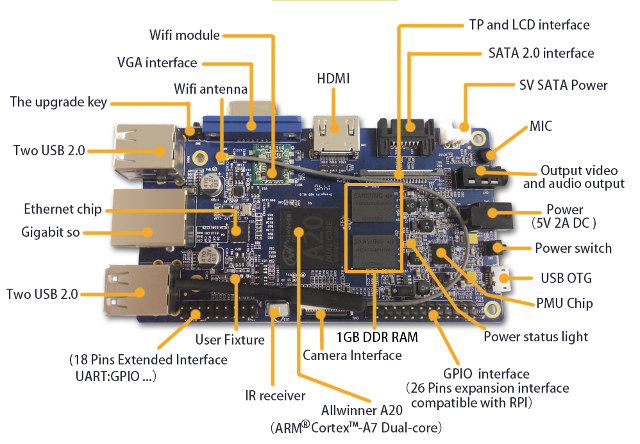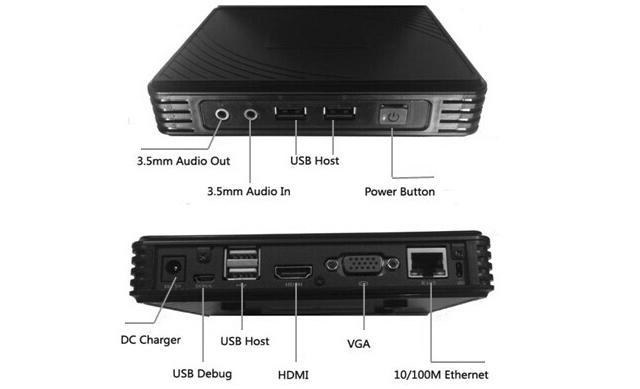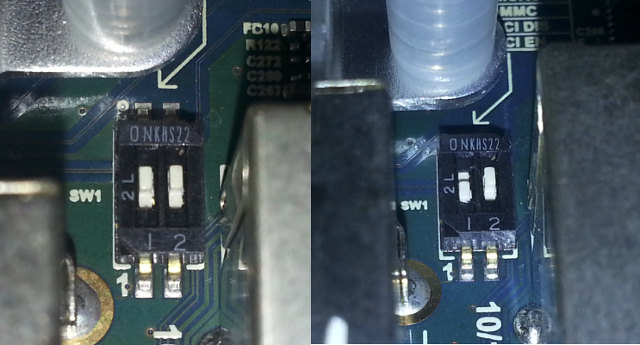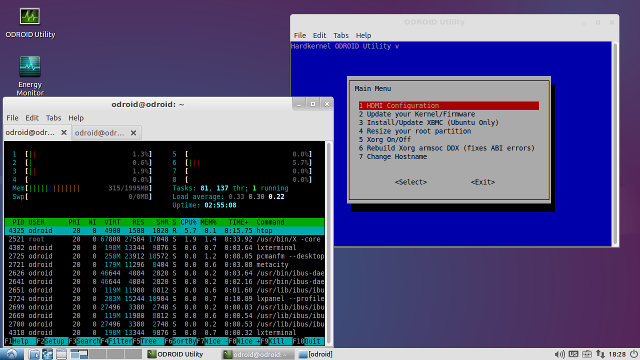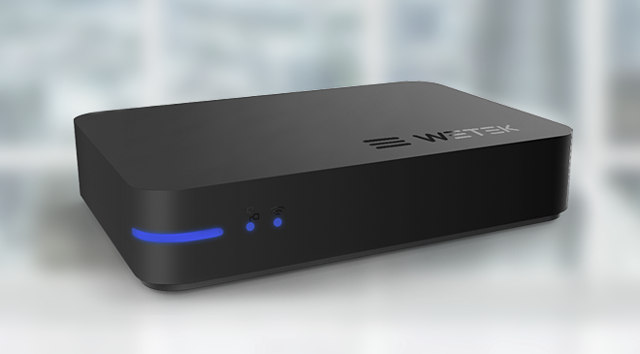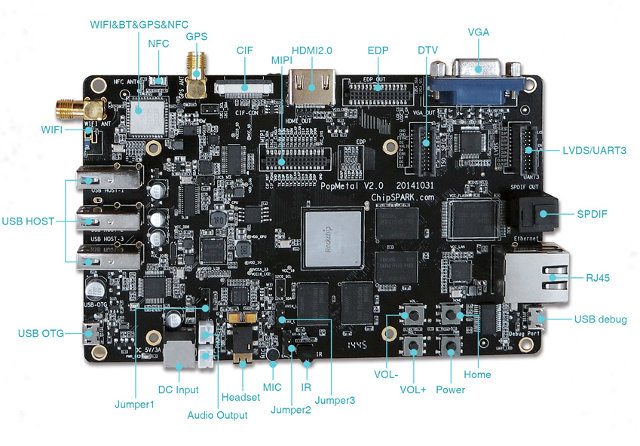ARM, Szeged University in Hungary, and Samsung Research UK have been working on TyGL, a new backend for WebKit accelerated with OpenGL ES2.0, and developed and tested on ARM Mali-T628 GPU found in Samsung ARM Chromebook. It will typically provide 1.5 to 4.5 times higher performance, but in the best cases, it can achieve up to eleven times the performance of a CPU-only rendered page. The key features of TyGL include: Web rendering accelerated by GPU – Batching of draw calls delivers better results on GPUs. TyGL groups commands together to avoid frequent state changes while calling the Graphics Context API. Automatic shader generation – TyGL generates complex shaders from multiple shader fragments, and ensures the batches fit into the shader cache of the GPU. Trapezoid based path rendering – Work in progress. It will leverage GPU capabilities such as the Pixel Local Storage extension for OpenGL ES. No software […]
Orange Pi Development Boards Are Raspberry Pi “Clones” based on Allwinner A20 and A31s
After Raspberry Pi, Waxberry Pi, and Banana Pi boards, here come another fruit-named board with Orange Pi. There are actually three models, with Orange Pi and Orange Pi mini based on Allwinner A20, and Orange Pi Plus powered by a quad core Allwinner A31s processor. I’ve drawn a comparison table with the specifications for the three models. Please note that Orange Pi Plus full specifications have not been released yet, so I don’t have all details. Orange Pi Mini Orange Pi Orange Pi Plus SoC Allwinner A20 dual core Cortex A7 processor up to 1GHz with Mali-400 MP2 GPU Allwinner A31s quad core Cortex A7 processor with PowerVR SGX544MP2 GPU System Memory 1 GB DDR3 Storage 2x micro SD slot + SATA NAND Flash + micro SD slot + SATA TBD Video Output HDMI, AV, and DSI I/F HDMI, AV, VGA, and DSI I/F HDMI, AV, and DSI I/F Audio I/O HDMI, […]
Linaro 14.12 Release with Linux 3.18 and Android 5.0
Linaro usually releases images and source code on the last Thursday of the month, but since most people will have long holidays for Chritsmas and New Year, the last working Thrusday of this month was yesterday (18th). Linaro 14.12 release includes Linux kernel 3.18 (baseline), Linux 3.10.62 & 3.14.26 (LSK, same versions as last month), and Android 5.0.1 Lollipop. Here are the highlights of this release: Linux Linaro 3.18-2014.12 Based on v3.18 release GATOR topic: version 5.20 updated topic from Qualcomm LT (includes IFC6410 board support) updated integration-linaro-vexpress64 topic by ARM LT (FVP Base and Foundation models, and Juno support) updated LLVM topic (uses the community llvmlinux-latest branch) included ILP32 patch set v3 rebased on 3.18. Boot tested with aarch64 userland. Work is in progress to test with aarch64-ilp32 userland. config fragments updated – SELinux related config options enabled in linaro-base.conf, device tree runtime self tests enabled in distribution.conf Linaro […]
Giayee Atom PC is a Rockchip RK3288 Mini PC with a VGA Port, Multiple Placement Options (Crowdfunding)
You may know that Rockchip and Intel have a partnership to design Atom Sofia processors, but Giayee Atom PC has nothing to do with this initiative at all, and it’s just a pretty standard Rocchip RK3288 based mini PC, except it includes a VGA port, and various “placement” options namely horizontal position, vertical position, and TV/monitor mount. Atom PC specifications: SoC – Rockchip RK3288 Quad Core Cortex A17 up to 1.8GHz with ARM Mali-T764 GPU supporting OpenGL ES1.1/2.0/3.0, Open VG1.1, OpenCL, DirectX11 System Memory – 2GB DDR3 Storage – 8 GB NAND flash (16 to 32 GB optional) Video Output- HDMI up to 1080p (no 4K?), and VGA up to 1920×1080 @ 60 Hz Audio Output / Input – HDMI, 3.5 mm jacks for Audio In and Out Connectivity – 10/100M Ethernet, 802.11 b/g/n Wi-Fi. Options: Dual band Wi-Fi, GPS, NFC, and Bluetooth USB – 4x USB Host ports, 1x […]
ODROID-XU3 Lite Board Ubuntu Review – Setup, Usability, and Performance
After testing ODROID-XU3 Lite with Android 4.4, and finding a workaround to some HDMI issues, I could finally try out Ubuntu, or rather Lubuntu with LXDE instead of Unity, in Hardkernel low cost octa-core development board. I’ll start this review by explaining how to install and setup Lubuntu on the board, followed by running various program to test the system usability as a desktop computer with LibreOffice, Chromium, XBMC, and 3D graphics, and finally run some performance tests with Phoronix Test Suit, build the Linux kernel natively, and transcode a video with avconf. Setting Up Ubuntu on ODROID-XU3 Lite All firmware images for ODROID development boards, can be found on odroid.in website, and if you want Ubuntu 14.04 image, go to ubuntu_14.04lts folder, to select the latest firmware file for your board. The latest image for ODROID-XU3 (Lite) is currently ubuntu-14.04.1lts-lubuntu-odroid-xu3-20141105.img.xz, it’s the same for micro SD card or eMMC […]
How to Modify HDMI Output Parameters in Linux for ODROID-XU3 (Lite) Development Board
Good news, I’ve finally managed to make HDMI output in my ODROID-XU3 Lite development board work with the Ubuntu image after some more tweaking. So ODROID XU3 Lite Ubuntu review is coming in the next few days. But first, I’ll explain the few steps I went through, in case others experience a similar issue. I downloaded, extracted, and flashed the latest Ubuntu image to a micro SD card with dd to give another try at running Ubuntu on my board, but no luck, I still got that black screen, albeit the system boots properly, as I got the command line using the serial console. During my Android review of ODROID-XU3 Lite, I noticed the system would always revert back to 720p60 video output, and HDMI output settings can be selected in /media/boot/boot.ini with the following content:
|
1 2 3 4 5 6 7 8 9 10 11 12 13 14 15 16 17 18 19 20 21 22 23 24 25 26 27 28 29 30 31 32 33 34 35 36 37 38 39 40 41 42 43 44 45 46 |
ODROIDXU-UBOOT-CONFIG # U-Boot Parameters setenv initrd_high "0xffffffff" setenv fdt_high "0xffffffff" # Mac address configuration setenv macaddr "00:1e:06:61:7a:39" #------------------------------------------------------------------------------- # Basic Ubuntu Setup. Don't touch unless you know what you are doing. # -------------------------------- setenv bootrootfs "console=tty1 console=ttySAC2,115200n8 root=UUID=e139ce78-984" # boot commands setenv bootcmd "fatload mmc 0:1 0x40008000 zImage; fatload mmc 0:1 0x42000000 u" # --- Screen Configuration for HDMI --- # # --------------------------------------- # Uncomment only ONE line! Leave all commented for automatic selection. # Uncomment only the setenv line! # --------------------------------------- # ODROID-VU forced resolution # setenv videoconfig "video=HDMI-A-1:1280x800@60" # ----------------------------------------------- # 1920x1080 (1080P) with monitor provided EDID information. (1080p-edid) # setenv videoconfig "video=HDMI-A-1:1920x1080@60" # ----------------------------------------------- # 1920x1080 (1080P) without monitor data using generic information (1080p-noedi) # setenv videoconfig "drm_kms_helper.edid_firmware=edid/1920x1080.bin" # ----------------------------------------------- # 1280x720 (720P) with monitor provided EDID information. (720p-edid) # setenv videoconfig "video=HDMI-A-1:1280x720@60" # ----------------------------------------------- # 1280x720 (720P) without monitor data using generic information (720p-noedid) # setenv videoconfig "drm_kms_helper.edid_firmware=edid/1280x720.bin" <strong> </strong> # ----------------------------------------------- # 1024x768 without monitor data using generic information # setenv videoconfig "drm_kms_helper.edid_firmware=edid/1024x768.bin" # final boot args setenv bootargs "${bootrootfs} ${videoconfig} smsc95xx.macaddr=${macaddr}" # drm.debug=0xff # Boot the board boot |
I actually tried a few settings in my previous attempt but unsuccessfully. Now […]
WeTek Play Android & Linux DVB-S2 / DVB-C/T/T2 Receivers are Now Available for 109 Euros
I reviewed Wetek Play Android media player with a DVB-S2 tuner this summer, and although I found it pretty good for a dual core media player, and liked its PVR functions, more work was needed to fix several bugs, and improve “WeTek Theater Live TV” app. Several months later, they must consider their devices ready, as they’ve now launched their online store selling the DVB-S2 and DVB-C/T/T2 versions for 109 Euros, and a version without DVB tuner for 99 Euros, all including free shipping worldwide. Let’s remind us of the specifications: SoC – Amlogic AML8726-MX dual core Cortex A9 @ 1.5GHz with a dual core Mali-400MP GPU System Memory – 1GB DDR3 Storage – 4 GB NAND flash + 1x micro SD slot Video Output – HDMI, AV (CVBS + R/L audio) Audio Output – HDMI, AV, and optical S/PDIF Tuners – DVB-S2, or DVB-C/DVB-T/DVB-T2 depending on model with two […]
PopMetal Rockchip RK3288 Development Board Features Multiple Display Interfaces (HDMI, VGA ,eDP, LVDS, MIPI), GPS and NFC Connectivity
Up to now, we’ve had mainly two development boards based on Rockchip RK3288 Cortex A17 processor: Firefly-RK3288 is a low cost development board powered by Rockchip RK3288 processor selling for as low as $140 shipped, and Radxa Rock 2, a more professional and expansive solution with dual Ethernet, 3G modem and so on. A third RK3288 board has now surfaced which offers a middle ground between Firefly and Radxa boards. PopMetal development board comes with 2GB RAM, 8GB eMMC, 5 video outputs / display interfaces namely HDMI, VGA, embedded DisplayPort (eDP), LVDS, and MIPI DSI, as well as the usual Gigabit Ethernet, Wi-Fi, and Bluetooth connectivity, complemented with GPS and NFC. PopMetal technical specifications: SoC – Rockchip RK3288 quad core ARM Cortex-A17 processor @ 1.8Ghz with ARM Mali-T764 GPU with support for OpenGL ES1.1/2.0/3.0, OpenVG 1.1, OpenCL 1.1, DirectX 11 System memory – 2GB DDR3 Storage – 8 GB eMMC, […]


